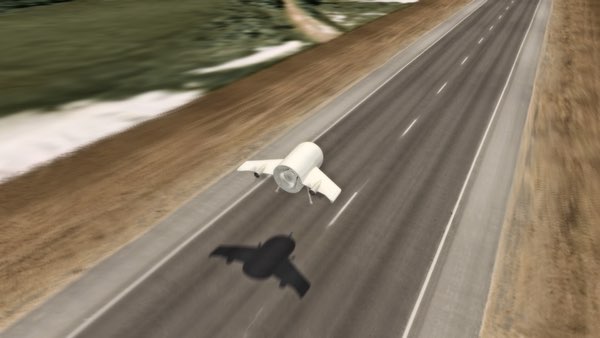A world tour of reusable launch vehicle effortsby Antoine Meunier
|
| Reusable vehicles as we know them all take their source in the Silbervogel (Silver Bird) of the German engineer Eugene Sänger. |
We can rewrite history in a thousand ways, but with a 15-year head start, the Silbervogel could have been the first reusable space plane. If it never saw the day, other projects stem directly from it: the RT-8 Dornier Hopper and even the X-20 DynaSoar and the Russian Keldysh bomber have a relationship with the Silbervogel. However, like their German cousin, they never took flight.
Over the past 55 years, the X-15 and the Space Shuttle are the only two human reusable launch vehicles that fully functioned. The X-15 had even had a longer career: 199 flights versus 135 for the shuttle. Even if the shuttle was a commercial failure, it demonstrated its versatility, from satellite repairs to servicing of the Hubble Space Telescope to assembly of the International Space Station. But the shuttle was still a craft probably too far ahead of his time, particularly difficult to implement because consists of several elements: the orbiter, its two solid rocket boosters, and its external tank. Moreover, the two accidents that claimed the loss of the Challenger crew in 1986 and Columbia in 2003 helped seal the end of the program.
Efforts outside the US
The efforts of SpaceX, which has successfully landed several Falcon 9 first stages for later reuse, and Blue Origin, which has reflown the propulsion module of its New Shepard suborbital vehicles several times, are the best-known current examples of reusable launch vehicle development in the world. But those two companies are not the only organizations interested in, and investing money in, reusable vehicle efforts.
In Asia, especially in India, there are efforts to develop reusable launchers. ISRO successfully launched on May 23 from the Sriharikota base a small plane atop a booster derived from those used for the PSLV. Dubbed RLV-TD, this demonstrator with a total length of 17 meters (with the rocket) evokes the US Air Force’s X-37B. On its flight, it reached an altitude of 65 kilometers and traveled 450 kilometers across the Bay of Bengal.
For the continuation of its program, India is planning to create a lifting body vehicle by 2025. Called Avatar, it would be capable of performing up to 100 launches and send a ton of payload into low Earth orbit. But India still has to perform additional reentry and landing tests before Avatar could fly.
And India is not the only Asian space power who wants to have a reusable craft. An article published by the site chinaspacereport.com kilometers suggests that China seeks to develop a small space shuttle in a configuration like the Ariane 5/Hermes for the next decade. It would, in fact, be derived from the small shuttle Jiao Tiao 1 (one-sixth the size of the US shuttle) that is flown atop a CZ-5 rocket. Will China succeed on this effort? This is another story.
| If some operators are now at a more advanced stage than others, it is clear that a growing number of companies and space agencies are now interested in pursuing reusability despite the failures of past programs. |
Europe has also boarded the RLV train. The first foundations were laid last year with Airbus Safran Launchers (ASL), which tested Adeline (ADvanced Expendable Launcher with INnovative engine Economy). In 2019 or 2020, the Prometheus (Precursor Reusable Oxygen METHane cost Effective) engine should be tested on the ground. It will be built using 3D printing to reduce costs. The project was formalized on June 1 at the launchers directorate of the French space agency CNES. It aims to be the “common brick at all launchers,” declared Jean-Marc Astorg, head of the CNES launchers directorate. The estimated cost of the program is €125 million.
At the same time, CNES plans to launch an experimental vehicle Callisto in collaboration with Japan. Callisto is about ten meters tall that can climb a hundred kilometers altitude before returning to rest on its launch site. The trial could take place from the Guiana Space Centre. The cost of Callisto is estimated at €100 million. After a first phase of work in November 2015, it’s expected that CNES, the German space agency DLR and Japanese space agency JAXA will discuss collaboration later this year.
Conclusion
If some operators are now at a more advanced stage than others, it is clear that a growing number of companies and space agencies are now interested in pursuing reusability despite the failures of past programs. Technically, Blue Origin, with several successful test flights under its belt, could be the first to take private persons in space very soon. So we soon be witnessing the beginning of a new era space access.
